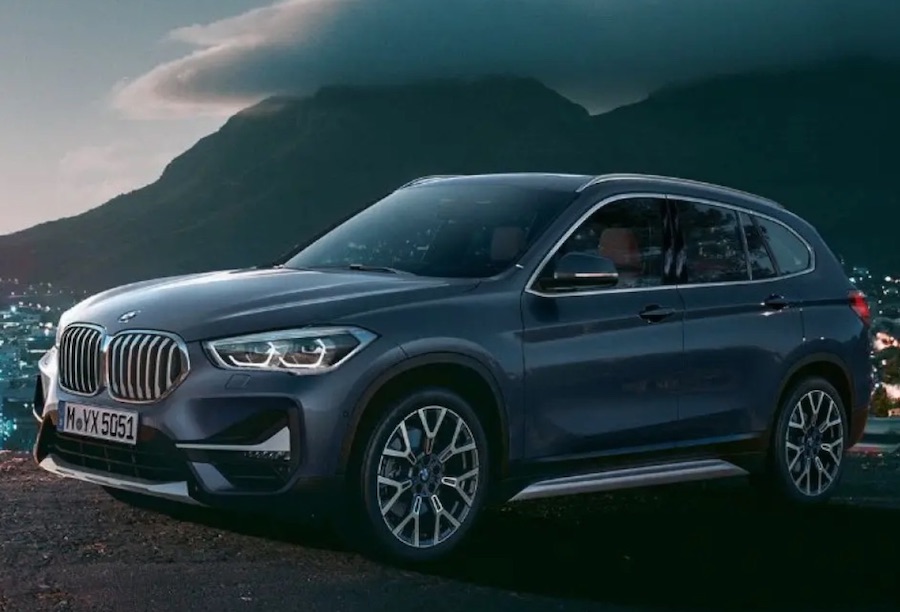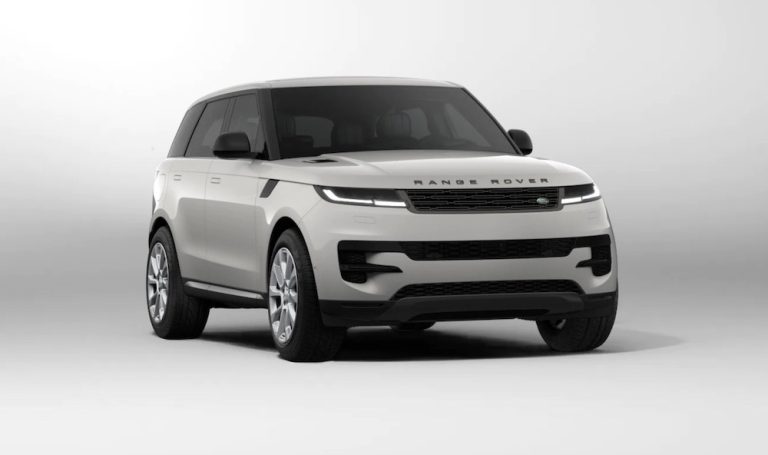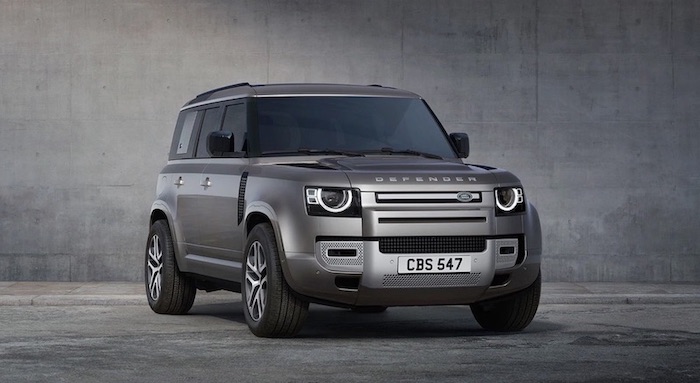Overview
BMW (Bayerische Motoren Werke AG), is a leading global automotive manufacturer headquartered in Munich, Germany. BMW is well known for its portfolio of luxury vehicles, to include the famed Rolls-Royce luxury cars. The group manufacturers a number of cars under its BMW brand, to include battery-electric vehicles (BEVs) and plug-in hybrid electric vehicles (PHEVs).
The company currently has the following portfolio of plug-in hybrid electric vehicles (PHEVs):
- BMW 225xe Active Tourer PHEV
- BMW 330e Saloon PHEV
- BMW 330e Touring PHEV
- BMW 530e Saloon PHEV
- BMW 530e Touring PHEV
- BMW 745e PHEV
- BMW X1 xDrive25e PHEV
- BMW X2 xDrive25e PHEV
- BMW X3 xDrive30e PHEV
- BMW X5 xDrive45e PHEV
Electric Cars: The Basics
For those of you new to zero-emission electric driving, we recommend a read of the following articles:
Sign up to the e-zoomed Electric Living newsletter
The BMW X1 SUV PHEV
The BMW X1 compact luxury SUV has been on sale since 2009. The SUV is currently on its second generation. The BMW X1 plug-in hybrid electric vehicle (PHEV) is available as an all-wheel drive (AWD) as standard.
SUVs continue to remain the rage in the UK, and the BMW X1 PHEV is a good entry-level option for consumers seeking a premium-badge, financial savings and lower tailpipe emissions from a compact SUV.
The BMW plug-in hybrid electric vehicle has a 8.82 kWh onboard EV battery, with a quoted WLTP electric range up to 31 miles. Most of the recent PHEVs incorporate a larger EV battery and deliver a higher zero-emission EV range. Having said that, for shorter distances, in particular, in towns and cities, an electric range over 25 miles is more than sufficient.
In fact, more than 2/3rds of motorist drive at an average 30 miles per day. Despite the quoted manufacturers electric range, expect the real-world range to be lower, impacted by a number of factors, to include: the way the electric vehicle (EV) is driven, the conditions of the road, speed, weather, passenger load, regenerative braking profile and more. A real-world pure electric range will be closer to 26 miles.
We at e-zoomed recommend (when appropriate), to always choose the maximum available regen braking profile in the EV. This will help recuperate more energy and increase the overall fuel-economy of the electric car.
Moreover, we also suggest to keep the EV battery ‘topped up’, as the more the EV can be driven on electric mode, the higher the financial savings. Keep in mind that driving an EV per mile is usually between 5 pence and 10 pence i.e. much cheaper than driving using petrol or diesel.
The X1 EV has a 3.6 kW onboard charger, sufficient for charging a small 8.82 kWh EV battery. Though an EV can be charged using a 3-PIN domestic socket, we would encourage EV drivers to charge using a dedicated residential EV charger like Easee: faster and safer in charging operation, compared to a domestic 3-PIN plug! The EV can be fully charged in 3 hours. The electric car does not offer DC charging. BMW offers a 8 years or 100,000 miles warranty for the EV battery.
The all-wheel drive BMW X1 xDrive25e PHEV pairs a 1.5-litre (3-cylinder) petrol combustion engine, with an electric motor (70 kW). The EV achieves 0-62 mph in 6.9 seconds, with a top speed of 119 mph (electric mode: 83 mph). Of course, a plug-in hybrid electric vehicle will be a little heavier than the internal combustion engine variant, given the additional weight of the onboard EV battery. However, a PHEV does gain from the availability of instant torque.
The plug-in SUV has a claimed fuel economy up to 156.9 mpg, but this will vary, given the amount the EV is driven on electric mode. To achieve a better fuel economy and financial savings, using the EV range on a regular basis will be imperative.
Given the lower tailpipe emissions (43g CO2/km) for the PHEV, company-car drivers can save further, due to the lower Benefit-in-Kind (BiK-12%) tax rate, compared to the conventional ICE variant.
In terms of practicality and quality, the X1 plug-in hybrid does not disappoint. There is ample legroom and headroom for front and rear passengers. Despite the boot size reduced in size due to the placement of the EV battery, it still offers 450 L.
The interior is completed to a high quality and is technology-filled, to include: driving assistant plus, BMW Head-Up Display, parking assistant, wireless charging, Apple Car Play and a lot more.
The EV does not qualify for the UK government plug-in car grant (PiCG). Bottom-line, electric driving is good for the environment and the wallet. You can lease electric vehicles (EVs) via e-zoomed at very competitive prices!
| PROS | CONS |
|---|---|
| Versatile and a practical family SUV without compromising on quality and comfort | Small EV battery and limited electric range |
| Compact SUV for city use | More affordable than other BMW PHEVs |
| Cheap to run on electric mode | On-board charger limited to 3.7 kW |
The BMW X1 Plug-In Hybrid SUV (credit: BMW)
| At A Glance | |
|---|---|
| EV Type: | Plug-In Hybrid Electric Vehicle (PHEV) |
| Body Type: | SUV |
| Plug-In Car Grant (PiCG): | Not Available |
| Engine: | Petrol-Electric |
| Available In UK: | Yes |
| Variants (1 Option) |
|---|
| BMW X1 M Sport (from £41,660) |
| EV Battery & Emissions | |
|---|---|
| EV Battery Type: | Lithium-ion |
| EV Battery Capacity: | Available in one battery size: 8.82 kWh |
| Charging: | DC charging not available. On-board charger 3.7 kW AC (0% – 100%: 3 hrs) |
| Charge Port: | Type 2 |
| EV Cable Type: | Type 2 |
| Tailpipe Emissions: | 43 – 41g (CO2/km) |
| EV Battery Warranty: | 8 years or 100,000 miles |
| Average Cost Of Residential Charging | |
|---|---|
| Battery net capacity : 8.8 kWh | £1.27 |
| Battery net capacity : 11.6 kWh | £1.67 |
| Battery net capacity : 12.0 kWh | £1.73 |
| Battery net capacity : 13.10 kWh | £1.89 |
| Battery net capacity : 14.10 kWh | £2.03 |
- Note 1: The average cost of residential electricity in the UK varies depending on the region, supplier and type of energy used. An average for the UK is 14.40 p/kWh.
- Note 2: Not all EV manufactures make available the data on net EV battery capacity, and in a number of instances the EV battery capacity advertised, does not state if it is gross or net capacity. In general, usable EV battery capacity is between 85% to 95% of the gross available capacity.
| Charging Times (Overview) | |
|---|---|
| Slow charging AC (3 kW – 3.6 kW): | 6 – 12 hours (dependent on size of EV battery & SOC) |
| Fast charging AC (7 kW – 22 kW): | 3 – 8 hours (dependent on size of EV battery & SoC) |
| Rapid charging AC (43 kW): | 0-80%: 20 mins to 60 mins (dependent on size of EV battery & SoC) |
- Note 1: SoC: state of charge
| Dimensions | |
|---|---|
| Height (mm): | 1582 |
| Width (mm): | 1821 |
| Length (mm): | 4447 |
| Wheelbase (mm): | 2670 |
| Turning Circle (m): | N/A |
| Boot capacity (L): | 450 |
| BMW X1 xDrive25e M Sport | |
|---|---|
| EV Battery Capacity: | 8.82 kWh |
| Pure Electric Range (WLTP): | 30 – 31 miles |
| Electric Energy Consumption (miles/kWh): | 4.0 – 4.1 |
| Fuel Consumption (MPG): | 148.7 – 156.9 |
| Charging: | DC charging not available. On-board charger 3.7 kW AC (0% – 100%: 3 hrs) |
| Top Speed: | 119 mph (electric: 83 mph) |
| 0-62 mph: | 6.9 seconds |
| Drive: | All-wheel drive (AWD) |
| Electric Motor (kW): | 70 |
| Max Power (hp): | 220 |
| Torque (Nm): | 220 |
| Transmission: | Automatic |
| Seats: | 5 |
| Doors: | 5 |
| Unladen Weight-EU (kg): | 1,820 |
| Colours: | 6 |
| NCAP Safety Rating: | Five-Star |
While e-zoomed uses reasonable efforts to provide accurate and up-to-date information, some of the information provided is gathered from third parties and has not been independently verified by e-zoomed. While the information from the third party sources is believed to be reliable, no warranty, express or implied, is made by e-zoomed regarding the accuracy, adequacy, completeness, legality, reliability or usefulness of any information. This disclaimer applies to both isolated and aggregate uses of this information.




































